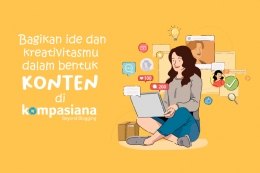Higher-order thinking Skills (HOTS) refer to the cognitive processes in which students engage at a higher cognitive level, developed through various cognitive concepts and learning taxonomies such as problem-solving methods, Bloom's taxonomy, and the taxonomy of learning, teaching, and assessment. HOTS encompass problem-solving abilities, creative thinking, critical thinking, reasoning skills, and decision-making skills. According to King, HOTS include critical, logical, reflective, metacognitive, and creative thinking. Meanwhile, Newman and Wehlage state that students who develop HOTS can clearly distinguish ideas, construct well-founded arguments, solve problems effectively, generate explanations, hypothesize, and interpret complex issues more clearly. Furthermore, according to Vui, HOTS occur when individuals connect new information with existing knowledge stored in their memory, reorganize and develop that information, and apply it to achieve a goal or solve a complex problem.
The primary objective of HOTS is to enhance students' thinking abilities at a higher level, particularly in critical thinking when processing various types of information, creative thinking in solving problems using prior knowledge, and decision-making in complex situations. The concept of HOTS is based on several perspectives, which are summarized in the following table:

This essay argues that HOTS are crucial for preparing students to critically analyze information, solve real-world problems, and innovate in various fields. Despite challenges in implementation, educational strategies such as problem-based learning and interdisciplinary thinking can effectively develop these skills.
Strategies to Develop HOTS in Students
Developing HOTS requires intentional instructional strategies that promote critical, analytical, and creative thinking. One effective approach is the implementation of problem-based learning (PBL), where students engage in real-world problems, encouraging them to analyze situations, evaluate options, and create solutions. Miterianifa et al. (2021) highlight that PBL stimulates critical thinking skills, thereby enhancing HOTS.
Additionally, fostering an environment that encourages questioning and exploration can enhance students' analytical skills. Integrating interdisciplinary thinking, which involves combining knowledge from various disciplines, enables students to view problems from multiple perspectives and develop comprehensive solutions (Fisher, 2001). Utilizing technology, such as educational software and online platforms, can also provide interactive and engaging opportunities for students to develop and apply HOTS.
Challenges in Implementing HOTS
Despite the benefits of HOTS include enhanced critical thinking, problem-solving, and adaptability in an ever-changing world, their integration into education is very difficult. One significant barrier is the traditional emphasis on rote memorization and standardized testing, which often prioritize lower-order thinking skills. The main issue lies in ensuring that students within the PISA-tested age group not only gain access to education but also achieve the literacy levels measured by the PISA. Andreas Schleicher (2019), Director for Education and Skills at OECD, stated,
"After great success in expanding access to education, Indonesia must now focus on quality."
In other words, while increasing access to education has been a success, it must not come at the expense of quality. This presents a critical challenge for Indonesian literacy education. The education budget is still seen as insufficient to both expand access and improve quality at the same time. This issue must be addressed by policymakers at the national level, as well as by teachers who play a crucial role in implementing educational policies.
It is a major task for all stakeholders to enhance students' capabilities in multiple aspects. PISA's HOTS-based questions have largely gone unanswered by Indonesian students. These questions often involve long discourse texts, world maps, graphs, and other complex information. One of the key issues is that students are not accustomed to engaging with long and complex texts. Teachers can no longer provide only simple texts repeatedly. Instead, students need to be introduced to complex, argument-rich texts to develop their analytical and critical thinking skills. Additionally, assessing HOTS can be complex, requiring the development of new evaluation methods that move beyond traditional testing to capture students' higher-level cognitive abilities (Zohar & Dori, 2003).
In conclusion, Higher-Order Thinking occurs when students engage with their existing knowledge in a way that transforms it, meaning they are able to modify or create new knowledge and produce something original. Through higher-order thinking, students can clearly distinguish ideas, construct well-reasoned arguments, solve problems effectively, generate explanations, formulate hypotheses, and interpret complex issues more clearly. These abilities explicitly demonstrate how students engage in reasoning. This essay has demonstrated that HOTS enable students to effectively navigate the digital landscape, solve real-world challenges, and drive innovation across various fields. Although implementing HOTS in educational systems presents challenges, strategies such as problem-based learning and interdisciplinary approaches have proven to be effective solutions.
References
Anderson, L. W., & Krathwohl, D. R. (2001). A Taxonomy for Learning, Teaching, and Assessing: A Revision of Bloom's Taxonomy of Educational Objectives. Longman. Retrieved from https://archive.org/details/taxonomyforlearn0000unse
Brookhart, S. M. (2010). How to Assess Higher-Order Thinking Skills in Your Classroom. ASCD. Retrieved from https://www.ascd.org/books/how-to-assess-higher-order-thinking-skills-in-your-classroom
Facione, P. A. (2011). Critical Thinking: What It Is and Why It Counts. Insight Assessment. Retrieved from https://www.insightassessment.com/article/critical-thinking-what-it-is-and-why-it-counts
Fisher, A. (2001). Critical Thinking: An Introduction. Cambridge University Press. Retrieved from https://www.cambridge.org/core/books/critical-thinking/6A8E6E7A0F3A6A1A3E6E6E6E6E6E6E6E
Lewis, A., & Smith, D. (1993). "Defining Higher Order Thinking." Theory into Practice, 32(3), 131-137. Retrieved from https://www.jstor.org/stable/1476395
Miterianifa, P., Anggara, A., & Hidayah, R. (2021). "Developing Students' Critical Thinking Through Problem-Based Learning." Journal of Educational Research and Innovation, 5(1), 45-57. Retrieved from https://eudl.eu/doi/10.4108/eai.30-11-2020.2303766
Paul, R., & Elder, L. (2014). Critical Thinking: Tools for Taking Charge of Your Learning and Your Life. Pearson. Retrieved from https://www.pearson.com/us/higher-education/program/Paul-Critical-Thinking-Tools-for-Taking-Charge-of-Your-Learning-and-Your-Life-3rd-Edition/PGM332539.html
Zohar, A., & Dori, Y. J. (2003). "Higher-Order Thinking Skills and Low-Achieving Students: Are They Mutually Exclusive?" The Journal of the Learning Sciences, 12(2), 145-181. Retrieved from https://www.tandfonline.com/doi/abs/10.1207/S15327809JLS1202_1
Follow Instagram @kompasianacom juga Tiktok @kompasiana biar nggak ketinggalan event seru komunitas dan tips dapat cuan dari Kompasiana. Baca juga cerita inspiratif langsung dari smartphone kamu dengan bergabung di WhatsApp Channel Kompasiana di SINI








